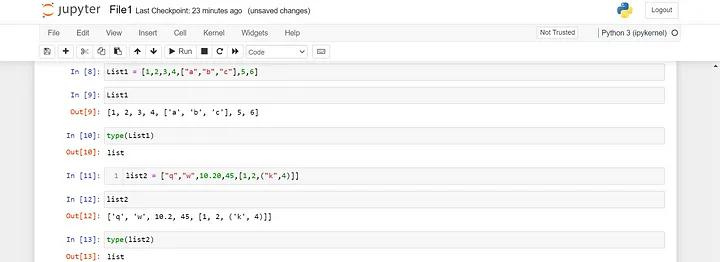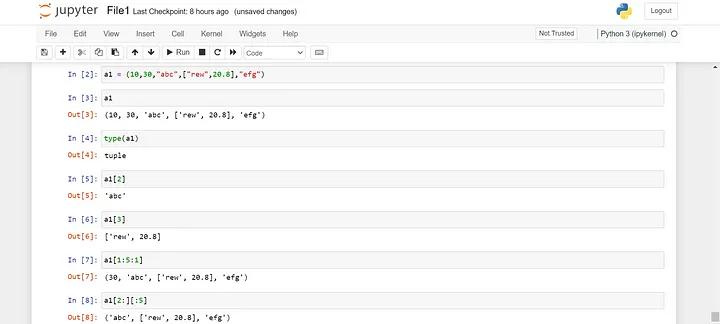NumPy
NumPy, created by Jarrod Millman, is a key library for scientific computing in Python. Its name stands for “Numerical Python” and it supports large, multi-dimensional arrays and matrices, as well as a range of high-level mathematical functions for manipulating these arrays. It is a vital resource for data scientists, engineers, and researchers using Python, delivering exceptional performance and flexibility for numerical analysis.

ad
Features
Efficient Array Operations: NumPy’s primary strength lies in its ability to efficiently handle arrays and matrices, facilitating their creation, manipulation, and computation.
Mathematical Functions: The library provides a wide range of mathematical functions, including trigonometric, statistical, and linear algebra functions, streamlining complex numerical tasks.
Broadcasting: NumPy’s broadcasting capability allows operations on arrays with differing shapes, enhancing code readability and conciseness.
ad
Interoperability: It integrates smoothly with other scientific libraries like SciPy, Matplotlib, and Pandas, forming a powerful ecosystem for scientific computing.
Random Number Generation: NumPy includes features for generating random numbers and sampling, essential for simulations and statistical analyses.
Multi-dimensional Data: The library supports multi-dimensional arrays, which are vital for applications in image processing, machine learning, and signal processing.
Open Source: As open-source software, NumPy is freely available and benefits from an active community of contributors.

User Interface
NumPy isn’t a conventional software application with a graphical user interface. Rather, it is a Python library used within Python scripts and interactive environments such as Jupyter notebooks. Its interface consists mainly of functions and methods for performing a range of mathematical and array-related tasks. The user interface experience varies depending on the programming environment in which you use NumPy.

System Requirements
To use the program, you need to have a Python interpreter installed on your system, with support for Python 3.5 and later.

PROS
- Efficient and high-performance numerical computations.
- Extensive set of mathematical functions.
- Compatibility with a broad range of scientific libraries.
- Excellent support for multi-dimensional arrays.
- Open source and free to use.
CONS
- Learning curve for beginners.
- Requires knowledge of Python programming.
FAQ’s
What is NumPy and who developed it?
NumPy, short for “Numerical Python,” is a Python library developed by Jarrod Millman. It is essential for scientific computing, offering support for large, multi-dimensional arrays and matrices, as well as a variety of high-level mathematical functions.
What are the main features of NumPy?
NumPy provides efficient array operations, a comprehensive set of mathematical functions, broadcasting for operations on arrays of different shapes, smooth integration with other scientific libraries, tools for random number generation, support for multi-dimensional data, and it is open-source.
How does NumPy handle array operations efficiently?
NumPy excels at handling arrays and matrices by providing optimized functions that facilitate their creation, manipulation, and computation, which significantly enhances performance.
What kind of mathematical functions does NumPy offer?
NumPy offers a wide range of mathematical functions, including trigonometric, statistical, and linear algebra functions, which help simplify complex numerical tasks.
What is broadcasting in NumPy?
Broadcasting is a feature in NumPy that allows for operations on arrays with different shapes. This capability makes code more concise and easier to read by automatically handling shape mismatches in arithmetic operations.
How does NumPy integrate with other scientific libraries?
NumPy integrates seamlessly with libraries such as SciPy, Matplotlib, and Pandas, creating a robust ecosystem for scientific computing by providing foundational array operations and mathematical functions.
Can NumPy generate random numbers?
Yes, NumPy includes tools for generating random numbers and performing random sampling, which are crucial for simulations and statistical analysis.
What are some typical applications of NumPy’s multi-dimensional data support?
NumPy’s support for multi-dimensional arrays is crucial for tasks in image processing, machine learning, and signal processing, where complex data structures are frequently used.
Is NumPy a paid software?
No, NumPy is open-source and free to use. It is developed and maintained by a vibrant community of contributors.
Do I need a graphical user interface to use NumPy?
No, NumPy does not have a graphical user interface. It is used within Python scripts and interactive environments like Jupyter notebooks, relying on its collection of functions and methods for mathematical and array-related tasks.
What are the system requirements for using NumPy?
You need to have a Python interpreter installed on your system, with support for Python 3.5 or later, to use NumPy effectively.
Conclusion
NumPy is a crucial library for scientific computing in Python, offering efficient array handling, extensive mathematical functions, and smooth integration with other scientific tools. While it requires some Python knowledge and has a learning curve, its high performance, support for multi-dimensional data, and open-source nature make it an invaluable resource for tackling complex numerical tasks.
ad


Comments are closed.